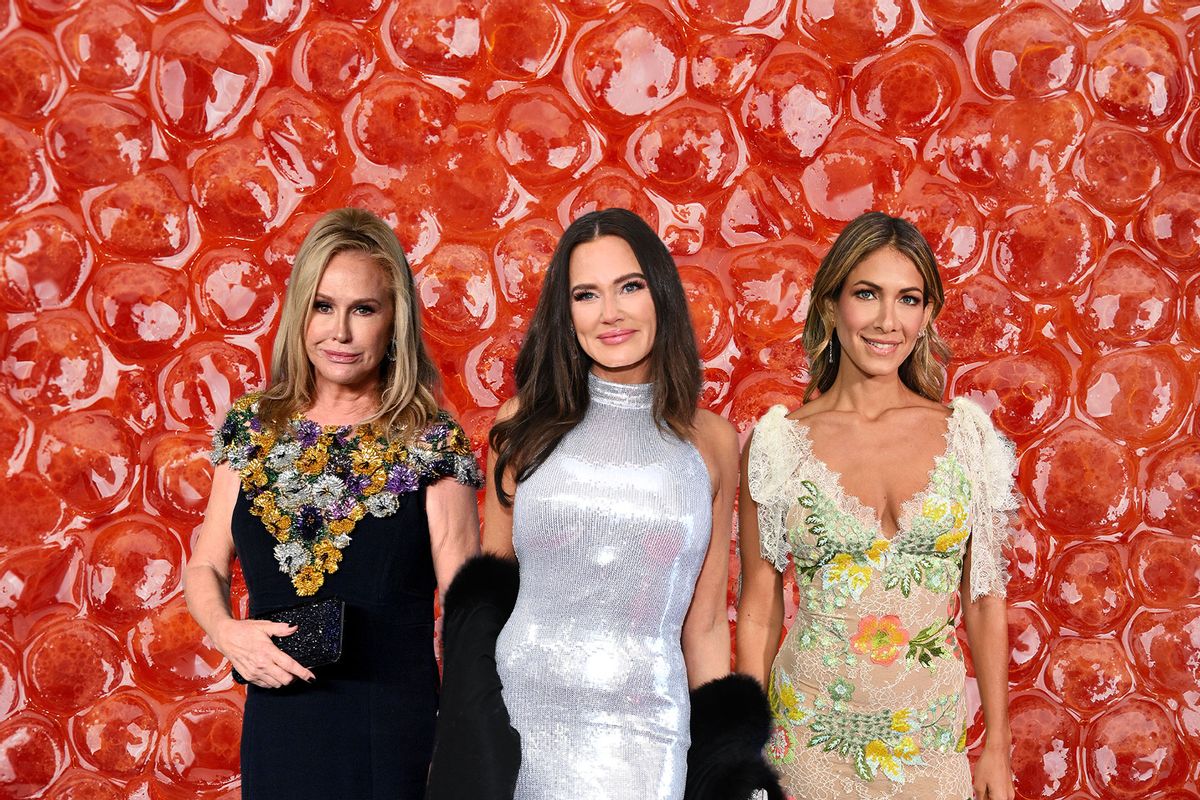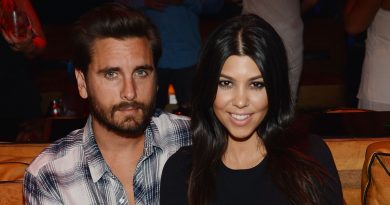The “Real Housewives” diet: Why we are seeing caviar everywhere when Americans can’t afford eggs

Last summer, I was staying in an AirBnB with some friends, and we had some downtime before heading to dinner. My friend called a few of us into the living room. “You have to see what Kathy Hilton does in this episode of ‘Real Housewives of Beverly Hills,'” she said.
So, I meandered over to the living room and watched as Kathy nonchalantly heaped spoonfuls of gleaming orbs of caviar onto a steaming, just-cut-open baked potato. She glibly topped it with some sour cream (or maybe creme fraiche?), then both Hilton and her sister, Kyle Richards, began eating it. Kyle had a confessional or two joking about the relative absurdity of the dish being served so casually — but then that was that. The sisters began arguing over who knows what and my friends and I had a good laugh, then resumed getting ready.
I know that a lot of viewers tune into the series because it offers a taste of “lifestyle porn,” with the absurd homes, cars, dinners and the like. But that caviar moment? It stuck in my head.
The wealth, the nonchalance, the privilege was particularly galling to me. And I watch a lot of “Housewives!”
Over the last year, there’s been a huge push to make caviar appear to be an everyday luxury, especially among younger Millennials and Gen-Z. For example, in February, TODAY published an article with the headline “How caviar became TikTok’s favorite snack.” I am incapable of reading this headline without rolling my eyes. In my mind, a snack implies a loose, easy, simple-to-eat food that you can enjoy on the go.
It does not imply caviar.
Furthermore, in a year in which people cannot afford (chicken) eggs, we’re expecting 20 year olds to buy caviar willy-nilly? It sounds ludicrous. However, just yesterday the concept of caviar as a casual snack was propositioned yet again — and this time by Pringles. According to a press release, this “Real Housewives of New York”-inspired collaboration, called the “Crisp and Caviar Collection,” features a luxe, black box filled with a canister of Pringles, a container of creme fraiche and a small tin of caviar from The Caviar Co.
Box prices range from $49 to $140.
Perhaps most interesting? The press release’s mention that the collaboration was indeed inspired by “The Real Housewives of New York.” Clearly, the culture cache and appeal of housewives cannot be overstated.
“From TikTok reviews to reality TV housewives, the nation is craving Pringles and caviar – and in true Pringles fashion, we’re satisfying the caviar-curious,” said Mauricio Jenkins, US marketing lead for Pringles. “Our partnership with The Caviar Co. not only embraces the trending snacking behavior in an approachable manner, but expertly curates our beloved crisp flavors with this seafood delicacy for a Pringles tasting experience unlike one you’ve ever had before.”
So what is behind the cultural obsession with turning caviar — once reserved for special occasions or splurges — into an everyday snack food, especially during a time when many people are struggling to afford basic groceries?
Want more great food writing and recipes? Subscribe to Salon Food’s newsletter, The Bite.
Within the “Real Housewives” universe — which is always a fascinating microcosm of class, privilege and clashes between old and new money — caviar plays an outsized role compared to other food items. New York housewife Erin Lichy had an event complete with “caviar caterers” who served the pricey fish eggs with (you guessed it) Pringles, which was touted as a perfect juxtaposition of low-and-high brow tastes. Over on the “Beverly Hills” franchise, housewife Dorit Kemsley threw a caviar-centric party for her husband, PK.
Outside the bounds of the television show, the “Real Housewives” still turn to caviar. Meredith Marks of the “Salt Lake” franchise just released a caviar line of her own, and Margaret Josephs of the New Jersey franchise released a book called “Caviar Dreams, Tuna Fish Budget.”
On the television program that many people turn to see what out-of-touch luxury looks like, caviar is in the spotlight. But that reputation is steadily changing (or at least companies and restaurants want us to believe that).
“While caviar has traditionally been supplemental on expensive, often stuffy restaurant menus, caviar bars are caviar-first — sometimes caviar-only,” writes Diana Spechler of Bon Appetit, “And although caviar is a splurge (prices vary based on size and color, sturgeon species and branding), there’s a broad push to make it feel accessible to a new generation. That means bar stools instead of white tablecloths, caviar ‘bumps’ to be slurped off the wrist and chefs appearing with their sleeves rolled up to talk caviar with customers.”
Perhaps unsurprisingly, many of the people pushing for caviar to become regarded as accessible have some skin in the game. For instance, mononymous social media darling Danielle, dubbed “The Queen of Caviar TikTok,” is the granddaughter of Mark Zaslavasky, who co-founded the original Marky’s Caviar back in 1983; her family still owns the restaurant and accompanying caviar store.
“Lots of people think of caviar and assume it’s extremely expensive,” Danielle said in a feature with Town and Country. “I’m trying to educate my followers, make caviar more universal and show them that there are super affordable entry price points.”
And she’s right. There are some tins of caviar out there for under $100. They are also lower quality. If a TikTok user is enamored with Danielle’s videos or a huge fan of Kathy’s Hilton’s baked potato-caviar explosion, that high-quality caviar could cost between $200 and $800 per ounce, per Town & Country. Aspirational luxuries are one thing, but there seems to be a mismatch between the narrative about caviar actually being an accessible snack and many Americans’ bank accounts.
As Salon Food reported back in March — and then followed up on again and again and again as food insecurity continued to worsen — experts predicted that our country was “racing towards a looming ‘hunger cliff,’ complicated even further by the expiration of SNAP benefits. More Americans than ever are having to turn to “buy now, pay later” apps and installment plans to buy basic groceries.
And as Bettina Makalintal succinctly put it in Eater, “The concept of caviar (luxurious) as a snack (functional) is a practice in contradictions, especially in light of food inflation.”
Now, I’m not trying to dissuade anyone from splurging. If you can afford it, go ahead! Grab a $100 tin of caviar (or perhaps one of those Pringles sets) and enjoy feeling rich while you spoon it over chips; in the end, perhaps that’s the feeling many people are chasing right now amid such a profound period of social, political and financial upheaval. A little bit of luxury at home never hurt anybody.
It also feels like an especially weird time for companies to push caviar on the masses.
So, if you do struggle to buy eggs, turn on Bravo, get a kick out of the whacky ladies on your screen, maybe have a pang of aspirational approach for their lives (caviar included), but please don’t feel like you need to go out and spend a paycheck to buy an infinitesimal tin of caviar to impress your friend with.
Let’s be honest: You’d probably have more fun (and it’d be much more economical) just watching “Housewives.”
Read more
about this topic


